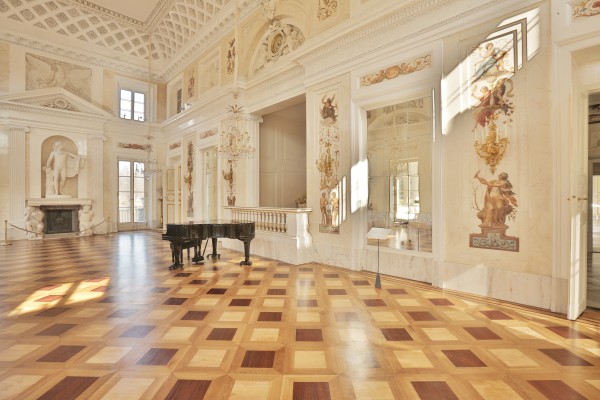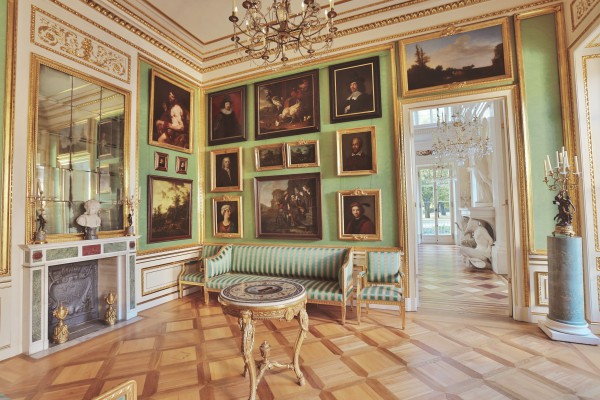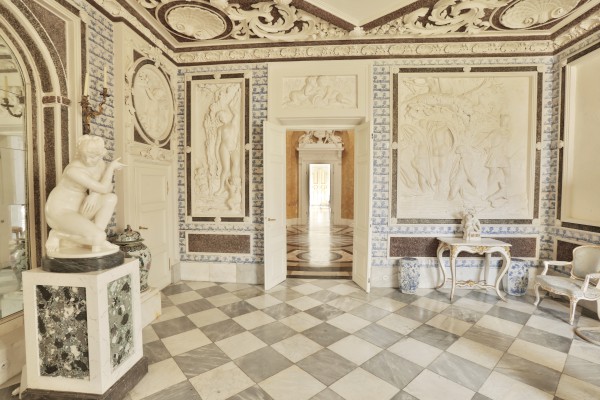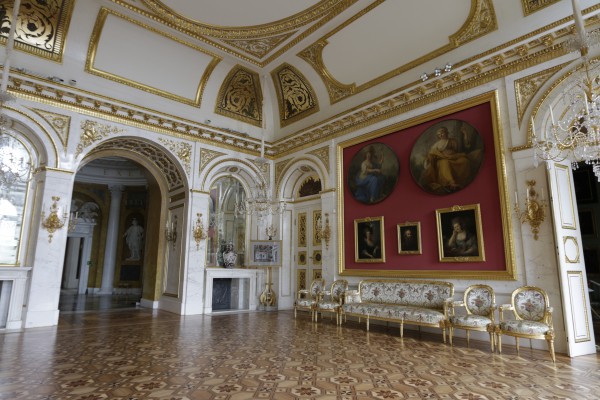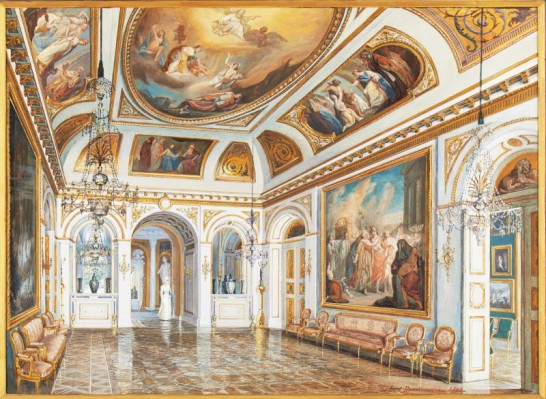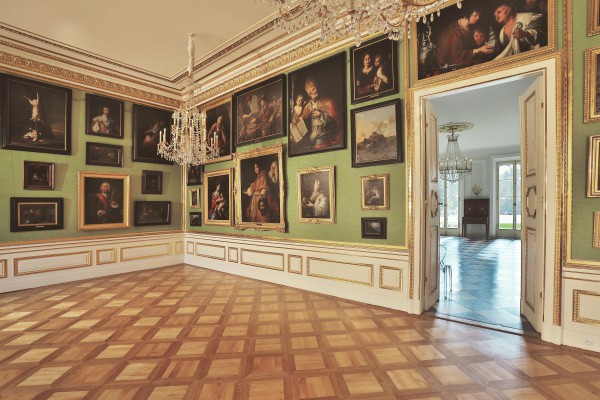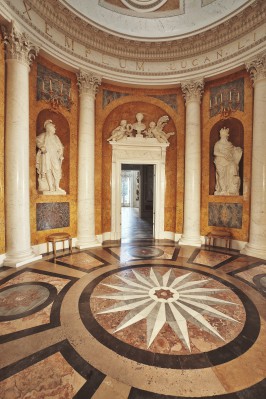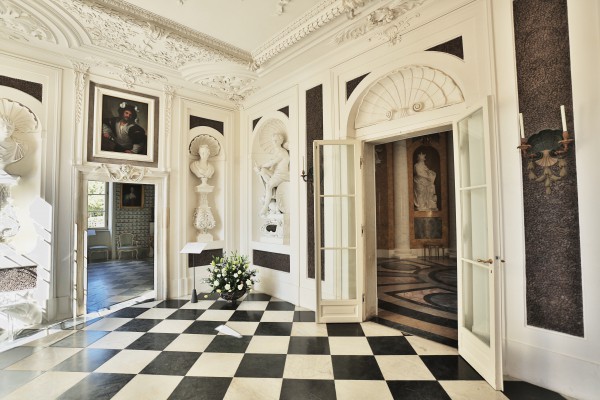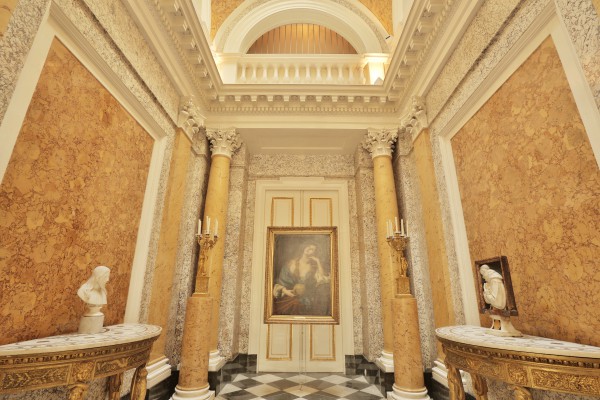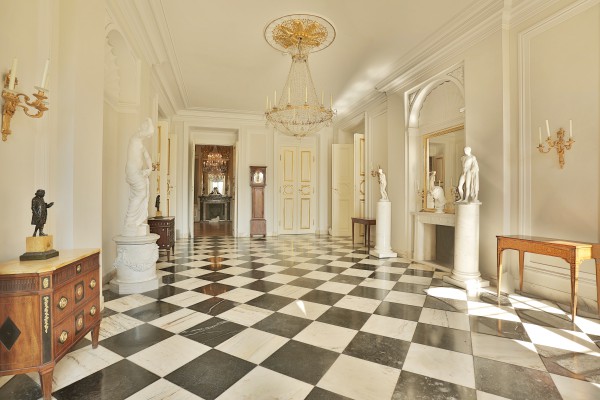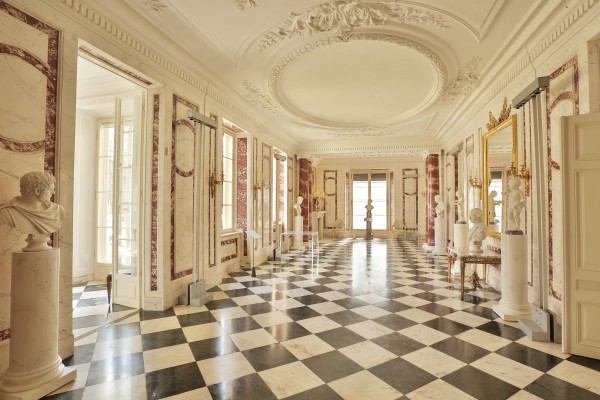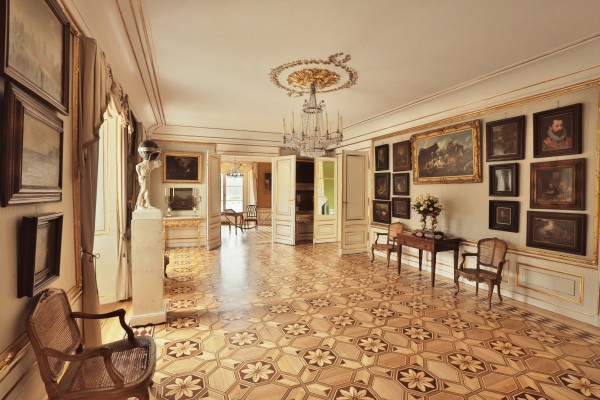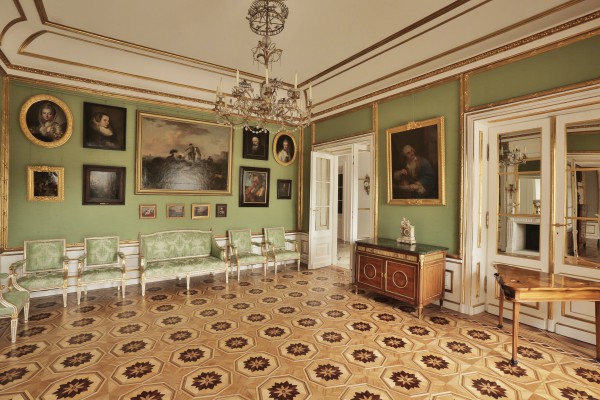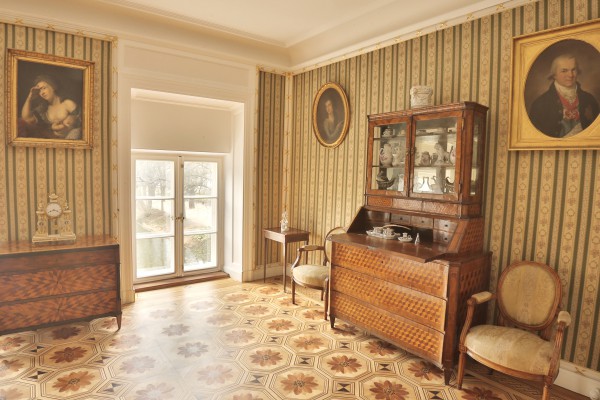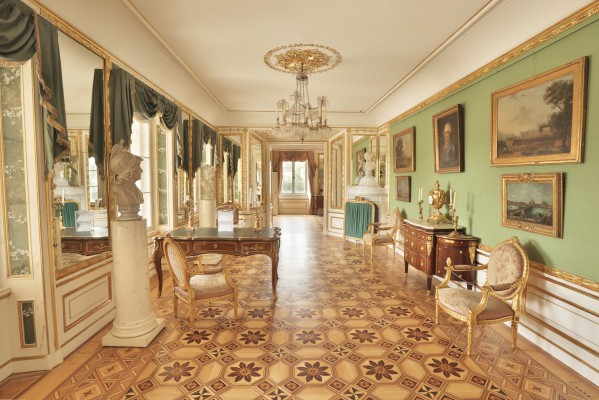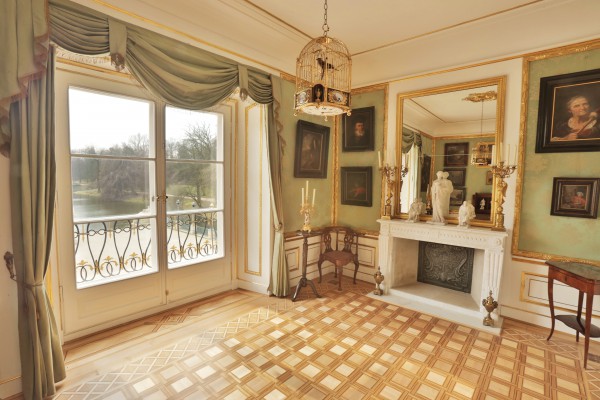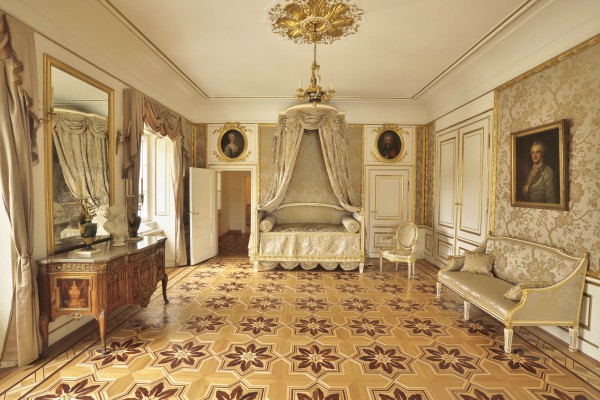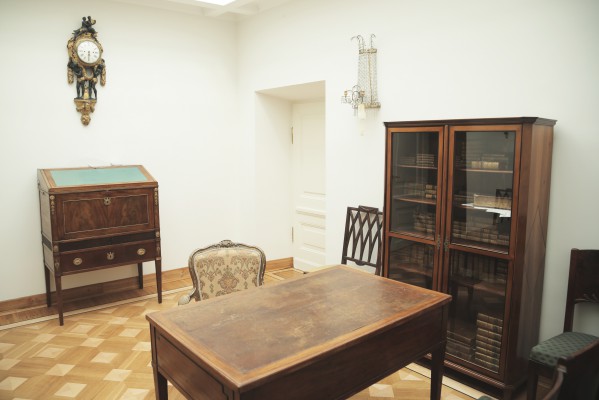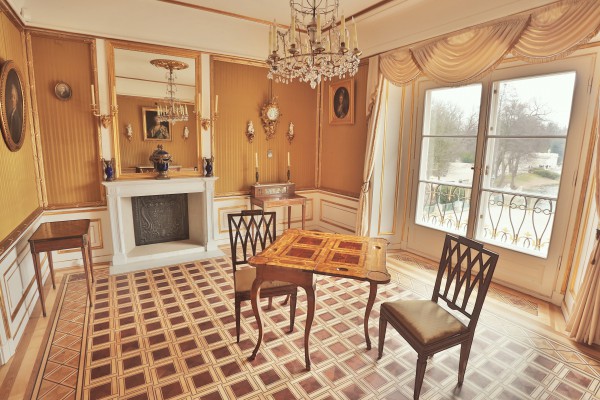
The Bacchus Room
The small interior on a rectangular plan, close to a square – is one of the oldest parts of the Bathhouse of Stanisław Herakliusz Lubomirski. At the time, it was the room for rest after taking a bath. The above explains the presence of numerous decorative motifs associated with water (e.g. shells). On request of the original owner, the walls of the room were decorated, and at the same time protected against moisture with Dutch tiles (so-called “Delft” tiles), which were very popular at the time, and depicted Idyllic scenes from everyday life. During the reign of Stanisław August, the room was known as the Faience Room owing to its ceramic wall coating. The most important decorative element of this interior is the monumental fireplace, above which hangs a painting by Jacob Jordaens the Elder, Flora, Silenus and Zephyr – painted in c. 1640. In 1783, it was purchased to be included in Stanisław August’s gallery, and since 1795, it has hanged in the Faience Room. It was not until 1939 that it was embedded in the richly adorned frame of the fireplace.
The Bacchus Room owes its present name to the ceiling painting made by Jan Bogumił Plersch in 1778, which depicts the idol of wine and Ceres. The painting burned down in the fire which broke out in the Palace in 1944. In the times of Stanisław August, the interior played the role of a small art gallery. 18 portraits by Hungarian painter, Ádám Mányoki, were displayed there. He was one of the most eminent painters of the 1st half of the 18th century that worked at the Saxon Court. The paintings showed members of the court of Augustus II of Poland. The portrait of this monarch, painted by Marcello Bacciarelli, most likely on request of Stanisław August, adorns the passage to the Bathing Room. In this way Stanisław August paid tribute to his predecessor, who – in his time – occasionally stayed in the residence. For a certain period, Augustus II leased the Bathhouse from the Lubomirski family. By hanging the portrait, Stanisław August also emphasised the importance of the place, which then presented itself as a special one since it was chosen by kings. The original owner of the Ujazdowski Residence, Prince Stanisław Herakliusz Lubomirski, an outstanding statesman and poet, is commemorated with his portrait hanging in the overdoor (supraporta).
All paintings which can presently be admired in the Bacchus Room were once part of Stanisław August’s collection.
